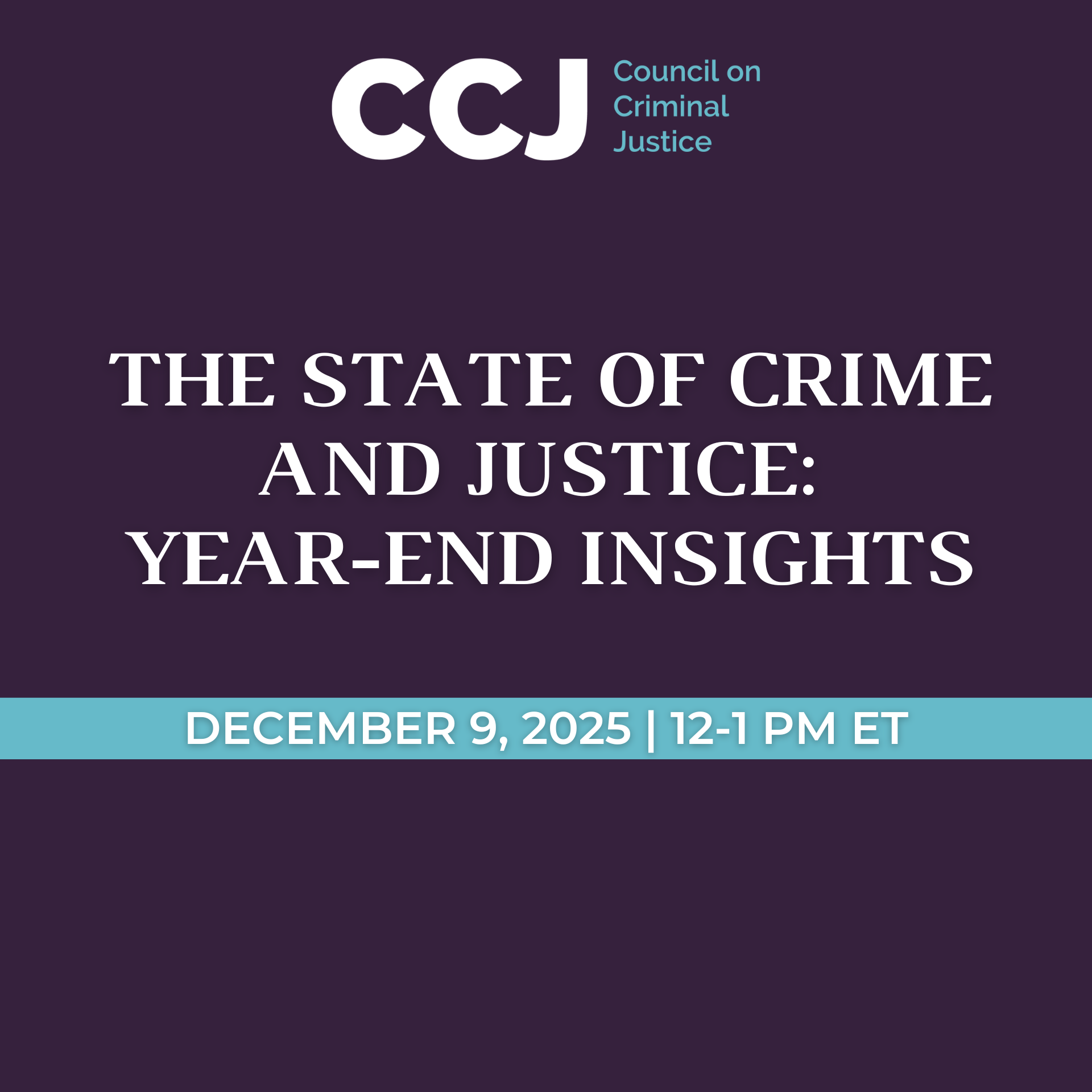At Third Meeting, Group Examines Concentrated Nature of Community Gun Violence, Calls for More Problem Analysis, Discusses Social Media Impact
At its third meeting, the Violent Crime Working Group discussed the critical importance of fully understanding the nature of violent crime, particularly community gun violence. The discussion featured a presentation by group members Thomas Abt, Senior Fellow at the Council on Criminal Justice, and Vaughn Crandall, Co-Director of the California Partnership for Safe Communities. The Working Group also examined the impact of social media on violent crime, aided by a presentation by Molly Baldwin, CEO and founder of the urban violence-reduction organization Roca, Inc.
Understanding Violent Crime
What We Know
- Many decisionmakers inside and outside government fail to properly understand the problem of community gun violence. Again and again, local leaders incorrectly assess the nature of the challenge they face. Some focus on the wrong things, such as emphasizing juvenile crime when the majority of gun violence involves adults. Others fail to focus at all, only considering root causes or structural factors. Finally, many believe their local violence problem to be unique, when, in fact, community gun violence behaves similarly across jurisdictions. These repeated misunderstandings represent perhaps the single biggest impediment to reducing community gun violence in cities around the country.
- Community gun violence is highly concentrated. Study after study finds that crime, and especially violence, concentrate among small networks of people and places. This is true in every, or nearly every, city in the United States. In Oakland, for instance, 60 percent of murders occur within a social network of approximately 1,000 to 2,000 individuals—about 0.3 percent of the city’s population. In Boston, 70 percent of all shootings over three decades concentrated in areas covering five percent of the city.
- Interventions addressing concentrations of violence have the strongest short-term impacts. Strategies associated with the most immediate, measurable, and concrete anti-violence outcomes (fewer homicides, gun-related injuries, etc.) have something in common: they focus on the small numbers of people and places that are disproportionately involved in such violence. Any strategy, or set of strategies, intended to curb violence in the short run must do the same. Specific interventions that focus on these concentrations will be identified by the Working Group in future bulletins.
Our recommendation that cities employ an intense focus on violence concentrations should not be misinterpreted as a call for more enforcement-oriented approaches. There are several non-enforcement strategies that can successfully engage those at elevated risk for violence. Also, enforcement-oriented strategies are best when narrowly tailored to minimize negative collateral consequences.
Emphasizing strategies with short-term results should also not be misconstrued as an argument against early prevention measures such as family training and home visitation programs, which can be a cost-effective means of controlling future crime and violence. Such strategies can and should complement one another, but should not be used interchangeably; both are needed.
Lastly, highlighting the proximate causes of community gun violence should not be misunderstood as ignoring the root causes of such violence. The Working Group acknowledged the importance of longstanding structural factors in its second meeting bulletin.
What To Do
-
- Every serious effort to address community gun violence should begin with a rigorous problem analysis. These analyses identify the key people and places driving violence locally and establish a shared, fact-based understanding to guide the work of city leaders inside and outside of government.
- Problem analyses are typically developed using law enforcement intelligence and data, and then reviewed by individuals outside of law enforcement with relevant knowledge and experience, such as trained street outreach workers.
These analyses generally include the following activities:
- Incident reviews examining several years of homicide and shooting data to determine context and motives, as well as connections between incidents.
- Analysis of the demographic characteristics and criminal justice histories of those involved in such incidents.
- Mapping the social networks of those involved and identifying the connections between individuals, groups, and locations.
- Mapping the occurrence of such incidents citywide to identify geographic concentrations, also known as “hot spots.”
Generally speaking, performing these analyses does not require extensive technical expertise. They can also be conducted relatively inexpensively and in a reasonably short period of time, as quickly as a few months. Nevertheless, only a few organizations are currently capable of conducting these assessments, creating a significant challenge for scaling these efforts beyond a few cities at a time. For assistance with such analyses, please see the “additional resources” section below.
Examining the Impact of Social Media on Violent Crime
What We Know
- Social media plays an increasingly important role in the lives of Americans, with 72 percent of Americans using some form of online social platform. Its influence may be even more pronounced among young people at the highest risk for becoming involved in crime and violence. Numerous researchers and violence-reduction practitioners have observed that offline altercations are increasingly triggered by online conflicts. Cyber- or “internet-banging” happens when individuals or groups taunt, insult, challenge, and threaten each other on social media, resulting in violent encounters in real life. Gang members also use social networks to boast about violence and plan criminal activities.
- As more and more violent conflicts include an online component, some seeking to mediate such conflicts have added an online presence to detect, monitor, and interrupt them before they turn deadly. Many law enforcement agencies already engage in some form of social media monitoring, although practices vary widely. More non-enforcement groups and organizations should engage online with those at risk for violence and provide peaceful counter-narratives to address aggressive posturing.
What We Do
- The study of the intersection between violent crime and social media is still in its early stages. An increasingly robust body of descriptive research should be supplemented with studies that assess concrete strategies to reduce online and offline violence. To date, there are no interventions to address this specific challenge that have been rigorously evaluated.
- That said, practitioners in the field cannot wait. Consistent with laws concerning civil rights and liberties, every anti-violence effort should have a robust online component. There is emerging evidence that using social media can, for example, significantly enhance the efforts of street outreach workers in violent neighborhoods “when coupled with close, trusting relationships with youth.”
- Finally, social media platforms themselves can and should do more to regulate content that may lead to violent conflict.
Additional Resources
For more specific information on problem analysis, contact the following individuals and organizations:
- Vaughn Crandall, California Partnership for Safe Communities (vaughn@thecapartnership.org)
- Keiland Henderson, National Institute for Criminal Justice Reform (Keiland@nicjr.org)
- Louisa Aviles, National Network for Safe Communities at John Jay College (laviles@jjay.cuny.edu)
- Robin Engel, University of Cincinnati Center for Police Research and Policy (robin.engel@uc.edu)
- Megan Cordes, University of Chicago Crime Lab (mcordes@uchicago.edu)
- Ben Struhl, University of Pennsylvania Crime and Justice Policy Lab (bstruhl@upenn.edu)
Introduction to Problem Analysis (prepared by the National Network for Safe Communities)
Problem Analysis: Indianapolis (completed by the National Institute for Criminal Justice Reform)
Presentation: Community Gun Violence and “Stickiness” (Thomas Abt, Council on Criminal Justice)
Presentation: Understanding Serious Violence and Identifying Highest Risk Populations (Vaughn Crandall, California Partnership for Safe Communities)
Presentation: Safety Principles & Practices (Molly Baldwin, Roca, Inc.)



